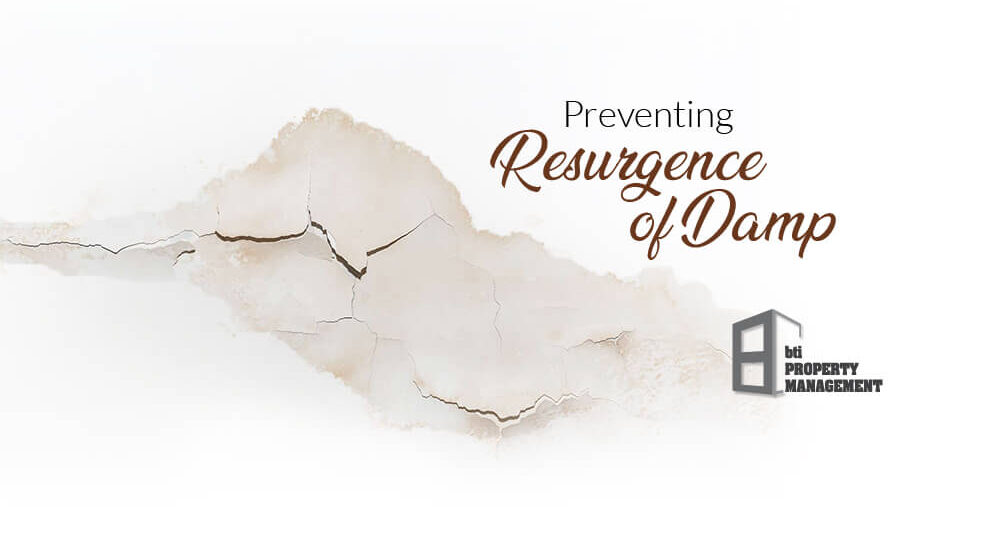- August 25, 2022
- Posted by: Iffat Ara Sharmeen
- Category: Investment Decision

A damp home is surely an uncomfortable place to live. Not only does it pose a health hazard, but it can also make way for the growth of mold on furniture, walls, wooden window frames, etc. There are many possible reasons as to why and how damp occurs. Damp may occur recurrently if the causes of damp are not identified and addressed properly. This article will point out some tips and tricks to prevent the resurgence of damp so that you do not have to worry about damp proofing again and again.
Know how Damp is Caused
Our first advice is to learn why dampness is affecting your home again and again. If other apartments in your building are facing the same issue, it could be due to a construction mishap. Newly constructed buildings can face a resurgence of dampness because the construction is still drying out. This type of damp is called rising da mp, and it can only be fixed by a professional property management service. Be sure to check whether there is a ‘tide mark’ above your floor.
Another cause of resurgence is penetrating damp. Through this method, moisture from the air seeps into the homes through leaked pipes, blocked guttering, damaged roof, cracked or defective brickwork. Penetrating damp is harder to identify because they are not always visible. Thus, a professional property management service will be needed to carry out a thorough inspection throughout your home. They will assess the damage and produce a report for the costs needed to fix the damage done by dampness.
Another cause of damp is condensation. When warm air touches cold surfaces, the air cannot hold in the moisture and passes it on as water droplets on the surfaces. This can lead to mold growth, especially where the air is still, such as inside cupboards, corners, behind furniture. To avoid condensation, all you have to do is practice ways to reduce moisture in your home. For example, dry your clothes outdoors, keep the lids on when cooking, keep the windows open when cooking or bathing, allow cabinets and wardrobes to be aired, and allow gaps between the walls and furniture. Unused rooms are often colder and can be hotspots for damp resurgence, so keep these rooms airy, dehumidified, and heated well.
Use Damp Proof Paint
A great way to stop the resurgence of damp is to use damp proof paint. This type of paint is ideally used for homes that are prone to more moisture naturally and there is nothing that can be done about it. This type of paint is strong, durable, and highly resistant to moisture. This means homeowners can save on costly maintenance that happens with damp resurgence. It also makes homes more appealing especially when reselling. There are some key things to remember here:
- Structural defects of the building can lead to resurging damp. If that is the cause of damp in your home, a damp proof paint will not solve the problem.
- It must be applied onto the walls properly. You cannot have any other coating of paint on the wall before use.
- The surface that will be treated with damp proof paint must be free of surface water, dirt, or debris.
If the cause of damp is not related to the building construction, you can ask experts to paint your internal and external walls with damp proof paint so that you can live a damp free life.
Install Appliances for Damp Resistance
You should install any appliance that helps to keep your home well-ventilated, insulated, and heated. For example, double glazed windows can keep your home properly insulated, which retains heat inside the home for a longer period of time. This will certainly prevent the growth of mold and resurgence of damp. As mentioned before, heaters can also work to prevent damp resurgence. Although, you should avoid using certain types of heaters such as paraffin heaters that can cause condensation. Fit extractor fans in your bathrooms and kitchens. These help to remove the buildup of steam when cooking or bathing with hot water. Steam can condense very easily, so extractor fans push steam outside the home. They are very cheap and use little electricity. Last but not least, use dehumidifiers to get rid of moisture content within your home.
Damp proofing starts with simple practices in your home that allow ample ventilation, insulation, and prevents buildup of moisture. However, if the cause of damp is quite serious, you need to take costlier measures and might also need the help of property management services. To get one-stop damp proofing and paint solutions, call 16604, or visit www.psmbd.com and we will help sort things out for you!
